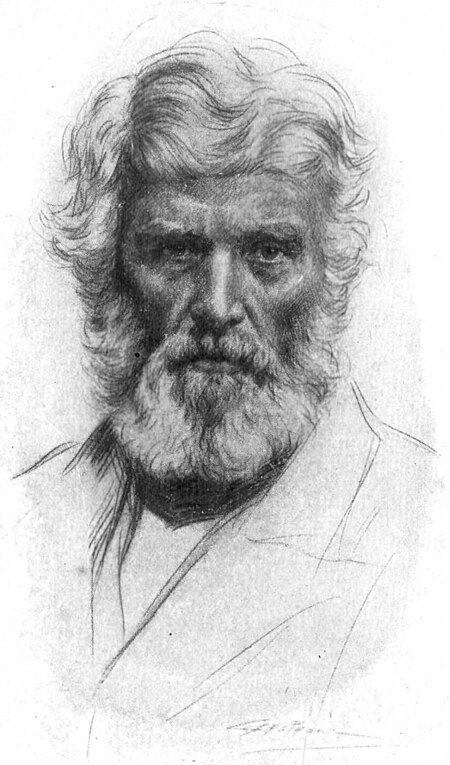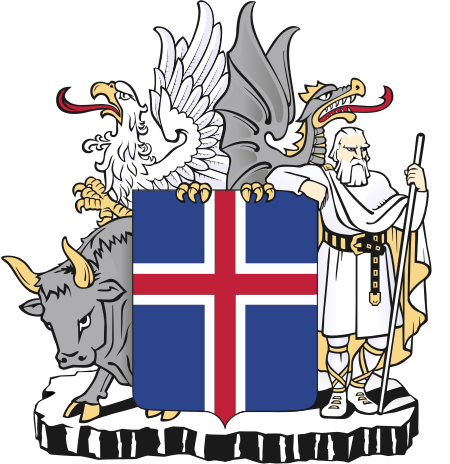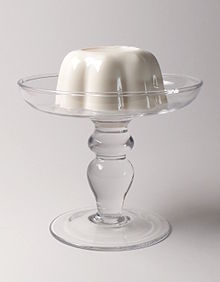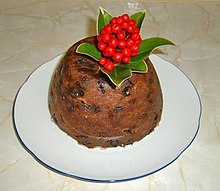Pudding
| |||||||||
Read other articles:

Computational complexity class of problemsThis article is about the computational complexity class. For other uses, see BQP (disambiguation).BQP in relation to other probabilistic complexity classes (ZPP, RP, co-RP, BPP, PP), which generalise P within PSPACE. It is unknown if any of these containments are strict. In computational complexity theory, bounded-error quantum polynomial time (BQP) is the class of decision problems solvable by a quantum computer in polynomial time, with an error probab…

British television channel Television channel QVC UKProgrammingPicture format576i (16:9 SDTV)1080i (HDTV)OwnershipOwnerQurate Retail GroupSister channelsQVC BeautyQVC StyleQVC ExtraHistoryLaunched1 October 1993LinksWebsitewww.qvcuk.comAvailabilityTerrestrialFreeviewChannel 16 (QVC) Channel 37 (QVC2) (19:00–13:00) QVC UK is a television shopping channel broadcast from the United Kingdom to the United Kingdom and Ireland. It was formed in 1993 when QVC, Inc. agreed to a deal with Sky TV to creat…

Ne pas confondre avec Église Notre-Dame-de-la-Cité d'Auxerre. Pour les articles homonymes, voir Notre-Dame et Cathédrale Notre-Dame. Cathédrale Notre-Dame-en-Cité d'Arras Gravure de la cathédrale Notre-Dame-en-Cité d'Arras au XVIIIe siècle avant sa destruction. Présentation Culte Catholique romain Type Cathédrale Rattachement Diocèse d'Arras Début de la construction XIIe siècle Style dominant Gothique Date de démolition 1799 Géographie Pays France Région Hauts-de-France…

Sacycomune Sacy – Veduta LocalizzazioneStato Francia RegioneGrand Est Dipartimento Marna ArrondissementReims CantoneFismes-Montagne de Reims TerritorioCoordinate49°12′N 3°57′E / 49.2°N 3.95°E49.2; 3.95 (Sacy)Coordinate: 49°12′N 3°57′E / 49.2°N 3.95°E49.2; 3.95 (Sacy) Superficie5,55 km² Abitanti384[1] (2009) Densità69,19 ab./km² Altre informazioniCod. postale51500 Fuso orarioUTC+1 Codice INSEE51471 CartografiaSacy Mod…

Pour les articles homonymes, voir Stanley, Laurel et Jefferson. Stan Laurel Stan Laurel vers 1920 Données clés Nom de naissance Arthur Stanley Jefferson Naissance 16 juin 1890Ulverston, Angleterre(Royaume-Uni) Nationalité Britannique Décès 23 février 1965 (à 74 ans)Santa Monica (États-Unis) Profession Acteur Films notables Laurel et Hardy conscrits (1939) modifier Arthur Stanley Jefferson, dit Stan Laurel, né le 16 juin 1890 à Ulverston, Lancashire dans le nord de l'Angleterre[1] …

American actress and singer (1937-2004) What'cha Gonna Do About It redirects here. For the Small Faces song, see Whatcha Gonna Do About It. Doris TroyBackground informationBirth nameDoris Elaine HigginsenAlso known asDoris PayneBorn(1937-01-06)January 6, 1937OriginNew York City, U.S.[1]DiedFebruary 16, 2004(2004-02-16) (aged 67)Las Vegas, Nevada, U.S.GenresR&B, doo-wopOccupation(s)Singer, songwriterInstrument(s)VocalsYears active1962–2004LabelsApple, Atlantic, PeopleWebsitesim…

Eckbolsheim Une place et une église. Blason Administration Pays France Région Grand Est Collectivité territoriale Collectivité européenne d'Alsace Circonscription départementale Bas-Rhin Arrondissement Strasbourg Intercommunalité Eurométropole de Strasbourg Maire Mandat Isabelle Halb 2024-2026 Code postal 67201 Code commune 67118 Démographie Gentilé Eckbolsheimois [1] Populationmunicipale 7 199 hab. (2021 ) Densité 1 348 hab./km2 Population agglomération 487 …

National anthem of Guyana Green Land of GuyanaNational anthem of GuyanaLyricsArchibald Leonard LukerMusicRobert Cyril Gladstone PotterAdopted1966Audio sampleU.S. Navy Band instrumental version (one verse)filehelp Green Land of Guyana is the national anthem of Guyana. Robert Cyril Gladstone Potter composed the music, while the lyrics were authored by Archibald Leonard Luker. Two separate contests were held to determine the words and the tune, respectively. It was adopted as the national ant…

In Mexico City, Mexico Sporting event delegationCanada at the1968 Summer OlympicsIOC codeCANNOCCanadian Olympic CommitteeWebsitewww.olympic.ca (in English and French)in Mexico CityCompetitors139 (111 men and 28 women) in 14 sportsFlag bearerRoger JacksonMedalsRanked 23rd Gold 1 Silver 3 Bronze 1 Total 5 Summer Olympics appearances (overview)19001904190819121920192419281932193619481952195619601964196819721976198019841988199219962000200420082012201620202024Other related appearances1906 I…

Penyuntingan Artikel oleh pengguna baru atau anonim untuk saat ini tidak diizinkan.Lihat kebijakan pelindungan dan log pelindungan untuk informasi selengkapnya. Jika Anda tidak dapat menyunting Artikel ini dan Anda ingin melakukannya, Anda dapat memohon permintaan penyuntingan, diskusikan perubahan yang ingin dilakukan di halaman pembicaraan, memohon untuk melepaskan pelindungan, masuk, atau buatlah sebuah akun. PT Bank Central Asia TbkLogo BCA digunakan sejak 1991JenisPublikKode emitenIDX: BBCA…

Sage writing was a genre of creative nonfiction popular in the Victorian era. The concept originates with John Holloway's 1953 book The Victorian Sage: Studies in Argument. Sage writing is a development from ancient wisdom literature in which the writer chastises and instructs the reader about contemporary social issues, often utilising discourses of philosophy, history, politics, and economics in non-technical ways. Prominent examples of the genre include writings by Thomas Carlyle, Matthew Arn…

Chess variant where pieces explode upon capture, removing surrounding pieces A capture in atomic chess. Nxg7 causes an explosion in which the capturing knight, captured pawn, and adjacent black rook and bishop are removed from play. Adjacent pawns are unaffected. Atomic chess is a chess variant. Standard rules of chess apply, but all captures result in an explosion through which the capturing piece, captured piece, and all surrounding pieces of both colors other than pawns are removed from play.…

2007 basketball video game 2007 video gameNBA 08Cover art (PlayStation 3)Developer(s)San Diego StudioA.C.R.O.N.Y.M. GamesPublisher(s)Sony Computer EntertainmentPlatform(s)PlayStation 2, PlayStation 3, PlayStation PortableReleaseNA: October 2, 2007[1][2][3]AU: February 14, 2008 (PS2, PS3)EU: February 15, 2008 (PS3)Genre(s)Sports, Simulation, ArcadeMode(s)Single-player, Online NBA 08 is an NBA basketball video game developed by San Diego Studio and published by Sony Compute…

Every Hurwitz surface has a triangulation as a quotient of the order-7 triangular tiling, with the automorphisms of the triangulation equaling the Riemannian and algebraic automorphisms of the surface. In Riemann surface theory and hyperbolic geometry, a Hurwitz surface, named after Adolf Hurwitz, is a compact Riemann surface with precisely 84(g − 1) automorphisms, where g is the genus of the surface. This number is maximal by virtue of Hurwitz's theorem on automorphisms (Hurwitz 1893). Th…

Active volcano in California, United States Lassen PeakLassen Peak volcanoHighest pointElevation10,457 ft (3,187 m) NAVD 88[1]Prominence5,229 ft (1,594 m)[2]ListingUS most prominent peaks 113thUS most isolated peaks 91stCalifornia county high points 13thCoordinates40°29′17″N 121°30′18″W / 40.48806°N 121.50500°W / 40.48806; -121.50500[1]GeographyLassen PeakShow map of CaliforniaLassen PeakShow map of th…

1937 film Tango NotturnoDirected byFritz KirchhoffWritten byPhilipp Lothar MayringRolf E. VanlooProduced byHans Conradi [de]Rolf E. VanlooStarringPola NegriAlbrecht SchoenhalsLina CarstensCinematographyFritz Arno WagnerEdited byGertrud Hinz-NischwitzMusic byHans-Otto BorgmannProductioncompanyFabrikation Deutscher FilmeDistributed byTerra FilmRelease date 22 December 1937 (1937-12-22) Running time88 minutesCountryGermanyLanguageGerman Tango Notturno is a 1937 German dr…

You can help expand this article with text translated from the corresponding article in Icelandic. (January 2022) Click [show] for important translation instructions. Machine translation, like DeepL or Google Translate, is a useful starting point for translations, but translators must revise errors as necessary and confirm that the translation is accurate, rather than simply copy-pasting machine-translated text into the English Wikipedia. Do not translate text that appears unreliable or low…

العلاقات البلغارية التنزانية بلغاريا تنزانيا بلغاريا تنزانيا تعديل مصدري - تعديل العلاقات البلغارية التنزانية هي العلاقات الثنائية التي تجمع بين بلغاريا وتنزانيا.[1][2][3][4][5] مقارنة بين البلدين هذه مقارنة عامة ومرجعية للدولتين: وجه المق…

City in Colorado, United States Home rule municipality in Colorado, United StatesCentral City, ColoradoHome rule municipality[1]The Teller House in Central City.Nickname: The Richest Square Mile on EarthLocation of Central City in Gilpin and Clear Creek counties, Colorado.Central CityLocation of Central City in the United States.Coordinates: 39°47′41″N 105°30′44″W / 39.79472°N 105.51222°W / 39.79472; -105.51222[2]Country United States…

This article is about the women's team. For the men's team, see Bosnia and Herzegovina men's national basketball team. Bosnia and HerzegovinaFIBA ranking17 (15 February 2024)[1]Joined FIBA1992FIBA zoneFIBA EuropeNational federationKSBIHCoachGoran LojoWorld CupAppearances1EuroBasketAppearances3MedalsNoneMediterranean GamesAppearances1Medals Gold: 1993 Home Away Medal record Mediterranean Games 1993 France Team The Bosnia and Herzegovina women's national basketball team represents Bosnia a…





